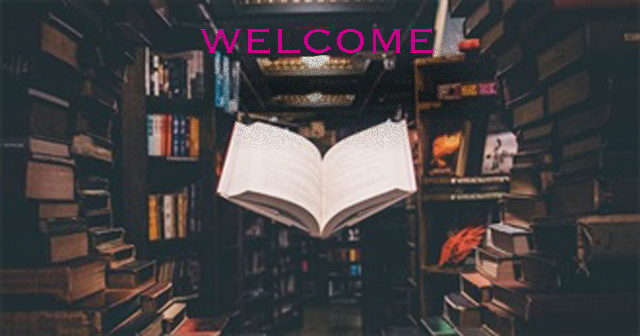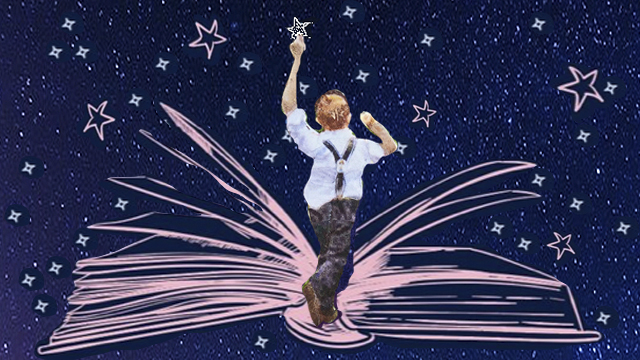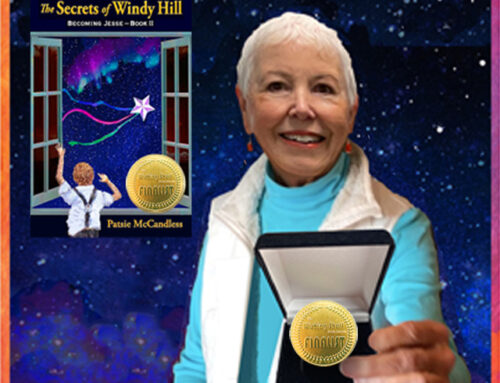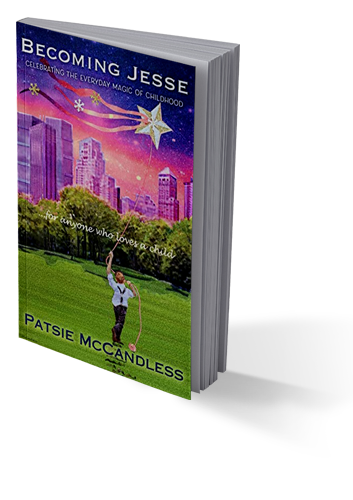The Real Magic of Books
“Jesse, you know the real magic of books! I have watched you ride with Sir Galahad on his quest for the Holy Grail and hide with Jim Hawkins in the apple barrel aboard the Hispaniola. And Peter Pan was at your bedroom window looking for his shadow! Imagination! It lasts and Lasts! It’s in everything you want to be. And become. Read on, Jesse!” ~ Patsie McCandless, The Secrets of Windy Hill
Teaching children to Read
Parents find the real magic of books as you read aloud to your children and talk, listen, and share – guiding them into the world of reading. Yes, teaching children to read begins at birth. All children are becoming. And parents are their champions, their guardians, guiding them into a world in which they can become the best they can be.
It is a long, rich, complicated journey that begins with the simple act of genuine talking and listening. Even unconsciously, you are gently teaching and sharing – and your children are listening, watching, learning.
As Stephen Sondheim’s lyrics sing:
Careful the things you say, children will listen. Careful the things you do, children will see and learn. Guide them that step away, children will glisten. They look to you for which way to turn…. Children will listen!
Talking and Listening
Listening begins in the womb and certainly, the moment the child is born They murmur and gurgle back the sounds they hear, slowly… little by little… step by step… learning to shape their sounds. By one year old, they already know how to imitate those sounds… and begin to know that they are words. Children learn all of this by listening to the talk of mama and papa, sister and brother, gramma and gramps. And they understand the meaning behind all these words. This is how children begin to understand their language and then mimick back, so that they, too, can talk. These are the roots of successful reading.
Singing
Singing can also play an important part in language development. Rhymes and meter, voice and tone create a little game in which the child can participate. The ABC song is a prime example of learning through song, as are nonsensical or story-like nursery rhyme songs from Old Mother Goose.
Reading aloud
“Books are a uniquely portable magic.” ~ Stephen King
Reading aloud to children is its own kind of magic, as I wrote in my blog. Children know this – begging for their read-aloud time to go on and on… into their dreams.
The magic of reading aloud captures so many of the puzzle pieces of learning to read. For example, as you slide your finger over the words, your child becomes familiar with the directionality of written words – left to right.
You can reinforce their ABC song by pointing out the letters in the story. Play rhyming games: how many words can we rhyme with ‘box’? Ask what letter the word begins with.
You can identify important words – and play games with the word. For example: an echo game with your child repeating the words; or finding a word in objects in the room (how many ‘squares’ can we find? How many circles?) It is all like a wonderful game that your child can play – and win! You are building an infinite pyramid of words and knowledge.
Ideas
Reading aloud opens the world to a child. And that child travels through the pages of the book into the world of imagination that enlivens the real surrounding world. New adventures and escapades in the story become part of the brain’s memory for association and connection.
Meaning
When you read with your child, pause here and there to talk about the meaning of a new word. As you move through the chapters, ask your child to tell you what has happened so far, and help him or her to retell the story. Ask ‘how’, ‘why’, ‘what if’ questions. Use pictures to help with words. In my Jesse book, The Secrets of Windy Hill, there are words that are not in a child’s vocabulary, like a ‘wood planer’ – but there is an illustration to help with the meaning. Look for connections between what’s happening in the book and your child’s life and experiences. Think of other books you have read together that may have the same ideas.
“The more you read, the more things you will know. The more that you learn, the more places you’ll go.” ~ Dr Seuss
Story Lines
As you come to an exciting part of the story, close the book (with your finger inside, marking the page, so that your child will know you are going to continue). Ask your child what he or she thinks will happen next. Predictions can be fun and spur imagination. Also, look for valuable lessons in the story. Here is a list of twenty classic children’s books that teach valuable lessons. And I proudly add my books to the list: Becoming Jesse and The Secrets of Windy Hill.
Structure in Words
As children grow you can play more games with words. For instance, Amelia Bedelia books have fun with words that sound the same, or have similar or opposite meanings (homophones, synonyms, antonyms). You may also enjoy sounding out words phonetically, rhyming words, spelling words; figuring out how many syllables in a word; words that are Names or Things or Action words. (Don’t labor over this – it is supposed to be enjoyable!)
Fun
Yes, reading aloud is supposed to be fun. Whether it is a simple or complex story, whether it is silly or serious, mysterious or laughable. Often an irresistible character keeps your child coming back for more – for the next chapter – or for the next book in the series.
“Outside of a dog, a book is man’s best friend. Inside a dog, it’s too dark to read.” ~ Groucho Marx
Success
Reading aloud is arguably the most important undertaking to forge the knowledge and indirect experiences that make for successful reading. Especially when children participate, they learn new words, learn about the world, understand written language, and discover the link between written and spoken words. That’s a lot of magic! With your…
LIGHT ON!







